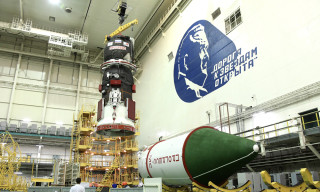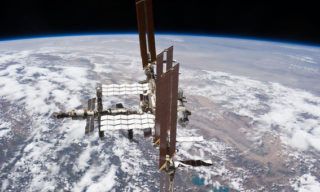According to RIA Novosti, Russia can use Soviet-era SS-18 Satan heavy intercontinental ballistic missiles to destroy celestial bodies posing a threat to Earth, a Russian scientist said on Sunday, four months after a powerful meteor struck Russia’s Urals region.
“Carrier rockets created on the basis of intercontinental ballistic missiles like Voyevoda [the Soviet name of Satan missiles], which use standard liquid fuel based on hydrazine, are well-suited for fighting suddenly discovered small [space] objects,” said Sabit Saitgarayev, a senior researcher at the State Rocket Design Center in the city of Miass in the Chelyabinsk Region.
“They [missiles] can stay in the condition of their readiness for launch for ten and more years, after some reequipping,” the scientist said.
Cryogenic fuel used in Russian heavy space rockets Soyuz and Angara cannot be kept for long and is supplied directly before the launch. Several days are required for preparing these rockets for launch, which makes them unsuitable for destroying small space objects that can be discovered several hours before their collision with the Earth, the scientist said.
Satan missiles can be used for destroying small space objects with a diameter of up to 100 meters threatening the Earth, if the missile is equipped with the third stage. If reequipped with a booster, the missile will be able to destroy space objects five-six hours before their collision with the Earth, he said.
The Satan missile can take off 10-20 minutes after an order for launch, the scientist said. If two hours are needed for the missile to reach the target, another two hours are required to specify the space object’s trajectory and one hour to coordinate the missile launch with the heads of other countries, he argued.
The scientist’s proposal comes about four months after a meteorite entered the Earth’s atmosphere and slammed into Russia’s Urals on February 15 with a massive boom that blew out windows and damaged thousands of buildings around the city of Chelyabinsk, injuring 1,200 people in the area. According to the Health Ministry, 52 were hospitalized.
NASA estimates the meteorite was roughly 50 feet (15 meters) in diameter when it entered Earth’s atmosphere, travelling faster than the speed of sound, and exploded into a fireball brighter than the sun.
The Soviet-era Voyevoda (SS-18 Satan) ICBMs have been in service since 1967.



















